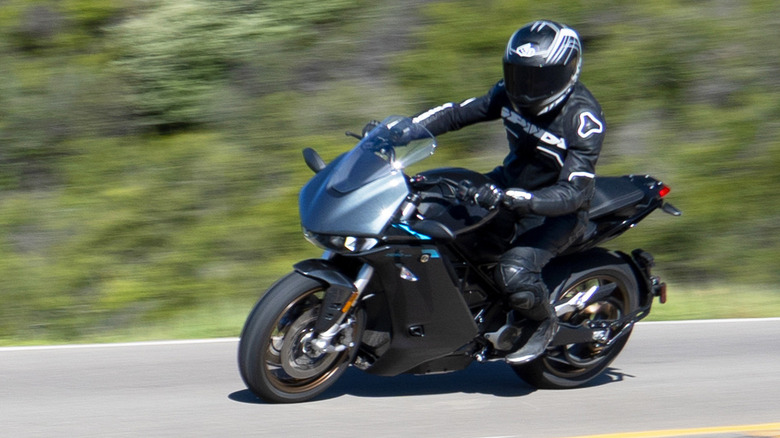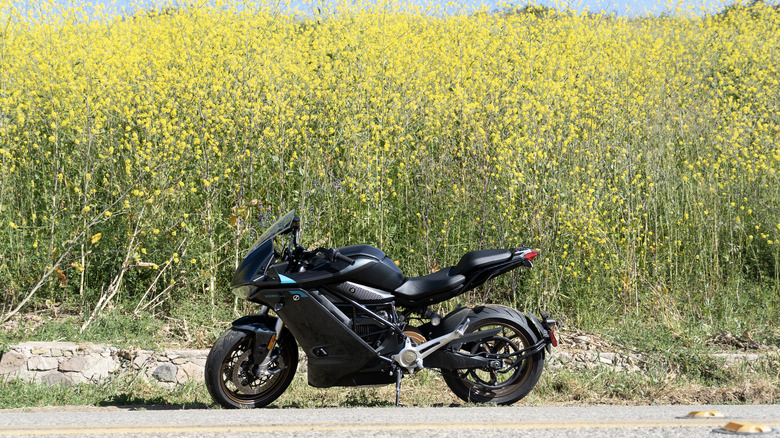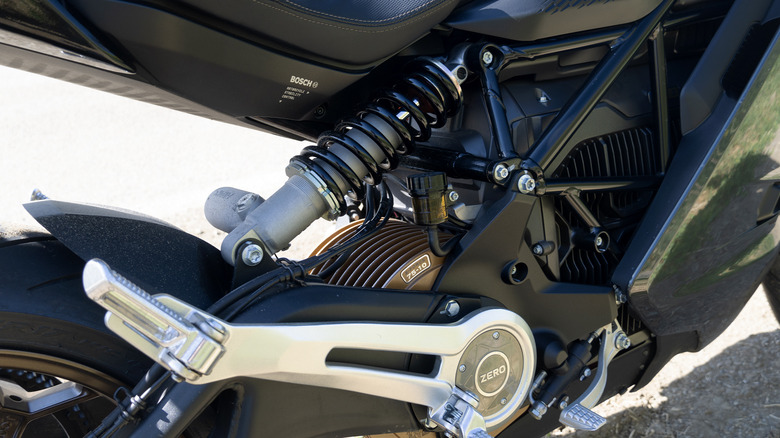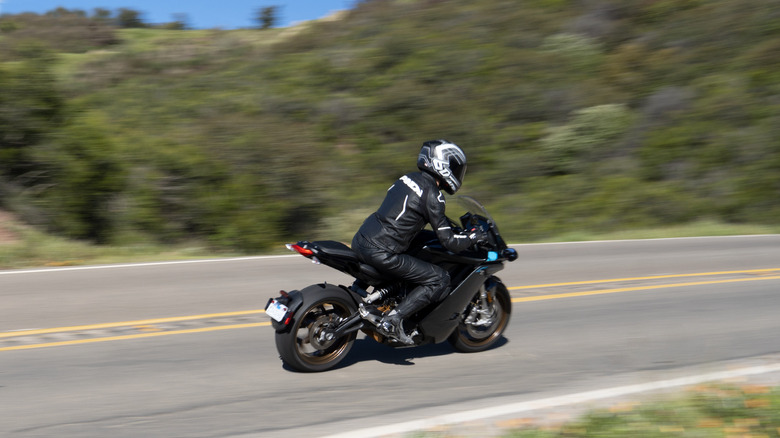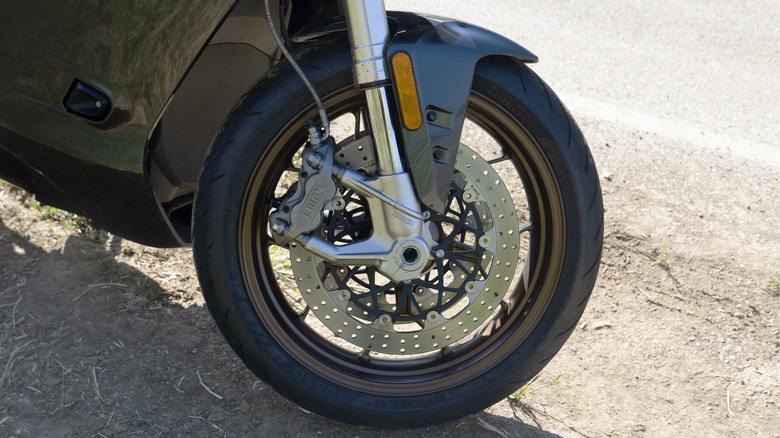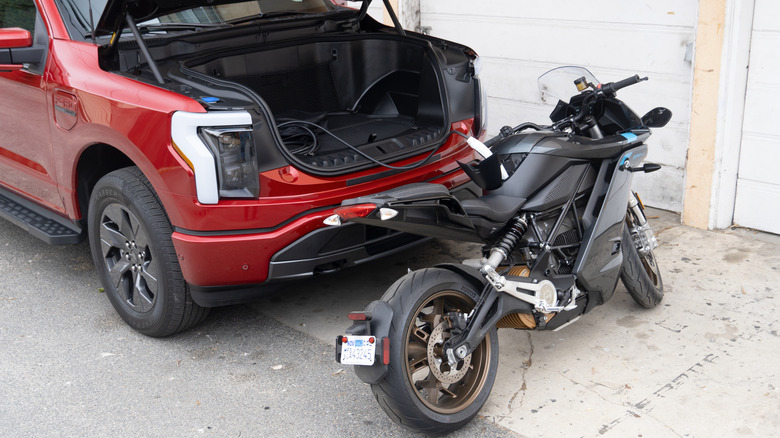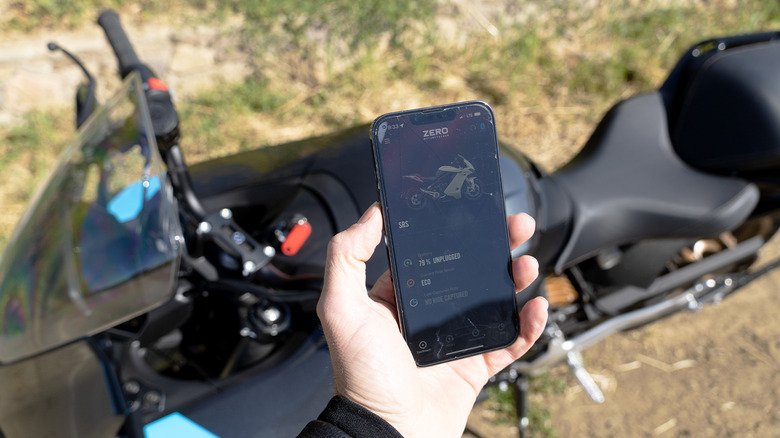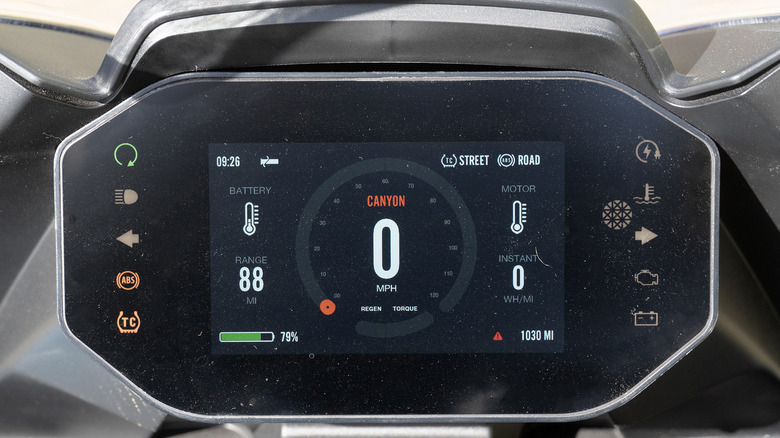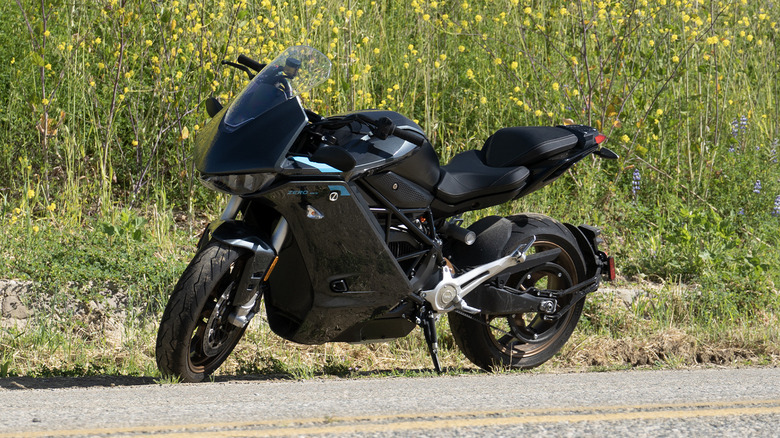2023 Zero SR/S First Ride: Electric Commuter Motorcycle Packs Just Enough Fun
An important statistic to keep in mind amid the burgeoning EV industry today: American consumers bought more electric bicycles in 2021 than electric cars, trucks, crossovers, and SUVs combined. That surprising detail reveals just how much fans of potential electrification value simple city runabouts given the current challenges of real-world charging and range anxiety. Somewhere in the middle between e-bikes and EVs, though, sit electric motorcycles. Cheaper than a car and now frequently offering over 100 miles of range, plus the ability to charge overnight in a garage from a standard outlet, e-motorcycles cater perfectly to urban and suburban mobility.
Zero Motorcycles has arguably led the charge (get it?) in the race toward motorcycle electrification, and their latest lineup includes the SR/S sport bike, which now comes with increased range and the techy addition of a new Cypher III+ app function. Amid a nonstop run of gasoline-powered motorcycles, I recently received a new SR/S loaner in West Los Angeles, ground zero (get it?) for running errands and weekend canyon carving on a fully electric motorcycle.
First impressions of the Zero SR/S
Just looking at the Zero from afar, and even up close, the company's steady improvements in build quality stand out immediately. Svelte materials complement a cleaner design with far better fit and finish. And a first ride around the block quickly reveals similar upward trajectory of immediate rideability, as smoother throttle modulation and simple controls create a straightforward transition for new riders. Deeper into the gas, if we can call it that, plenty of pep and power await those with more experience hoping to launch off the line and overtake at highway speeds with ease.
Of course, any potential Zero buyer will immediately focus on stats and specs of the battery and electric motor. This SR/S arrived with the 17.3 kWh battery, but not the optional 3.6-kWh Power Tank. Combined with Zero's proprietary Z-Force 75-10 permanent magnet brushless motor producing up to 110 horsepower and 140 lb-ft of torque, the SR/S can manage up to a claimed 187 miles of city range or, Zero cautions, up to 93 miles of highway range at 70 miles per hour. The motor routes power to the rear wheel through a carbon-fiber reinforced drive belt and no transmission, but can somehow still wind the bike up to 127 miles per hour.
Quickly acclimating to the electric motorcycle experience
Before trying to get anywhere near that top speed, though, I needed to acclimate to the e-motorcycle experience. In town, I selected the Eco drive mode at first, which limits torque output to only 16%, while upping regeneration and adjusting throttle modulation to maximize range. Rest assured that even in Eco, the SR/S delivers plenty of grunt for stop-and-go traffic, but I quickly toggled over to Standard looking for a bit more get-up. Here, the motor can churn out 72% of max torque and regen now hovers at closer to 50%. Switching between the different drive modes on the bike requires only the use of a single button just above the turn signal.
The fact that a relative newcomer to motorcycles like myself can just hop on and ride makes Zero's bikes quite unique, in my limited experience, and not just because I could play with the drive modes easily. The standard 31-inch standover seat height (higher and lower seats are options) makes for something of an upright riding position for a fairinged sport bike. With no clutch to feather and no left-foot gearshifting, the SR/S only takes a moment of adjustment to create a sense of confidence—though I regularly went to pull in the non-existent left-hand clutch lever almost every time I climbed on.
Given the instantaneously available electric torque, which could easily overwhelm tire traction, Zero employs Bosch Motorcycle Stability Control to keep things somewhat more tame than the power stats suggest. Of course, fiddling with the various drive modes can turn most of the nannies off so, much like many of the e-bikes I've ridden, the SR/S demands all the protective gear of an ICE motorcycle.
Full leathers for a canyon run
After a couple of short trips in town, I pulled on full leathers for a jaunt up in the canyons of Malibu. Cruising up the PCH at highway speeds, I kept an eye on my remaining range and distance traveled, just in case hauling up the hills drew down too much power. Range anxiety on my first long ride should be expected, I figure.
Equally as important, the SR/S felt nimble enough to lane-split at stop lights and eminently powerful enough to pull ahead of traffic when those lights turned green. Heading up to Topanga on Las Flores, though, I switched the drive mode to Canyon for the first time—which unleashes the e-motor's full torque figure and extends the top speed to 127 mph. All of a sudden, the bike transformed into a new beast, even given the relatively heavy battery pack that contributes to a total weight of 518 pounds.
Because the mostly hidden frame cradles the battery and motor so low, even such a heavy bike still delivers much of the thrill of lighter ride. Showa suspension with 43-millimeter forks and a 40-mm rear piggyback coilover shock damp all but the worst road imperfections. Bigger bumps or wavier sections do overwhelm the setup, though, creating something of a rafting effect on two wheels. A set of J.Juan brakes similarly perform just alright, though in Canyon mode, Zero sets the regen at around 85% to help with predictability while approaching corners. Personally, I tend to like regen in electric cars, so I debated creating a personal drive mode with full power, full traction control, and full regen—but more on that later.
Finding fun and exploring real-world range
Much like driving an automatic sports car with paddle shifters, rather than a manual with clutch pedal and stick shift, riding an electric motorcycle shifts (get it?) my attention more to finding the right line through corners, then transitioning to the brutal acceleration as early as possible. Gear selection fades out of mind in the zone, and smoothness while pushing hard reaches a level that gas bikes simply can't match. Whether the fun factor quite reaches the sensory stimulation of a powerful ICE motorcycle definitely comes down to personal preference. I can appreciate both for their pros and cons, as echoes of a roaring V-twin definitely outpace the futuristic whine of a carbon-fiber drive belt (which I still prefer in town, by the way).
I headed up to Malibu with 124 miles of range on the clock and got home with 17 miles of range remaining, after switching back to Standard once I dropped down out of the hills. Considering the ride was over 80 miles, mostly pushing hard uphill, that figure seems pretty solid, so I'd hazard a guess that the full 187 city miles might actually be doable with a more conscientious focus on easy riding. And Zero claims that tucking behind the small windscreen can improve electrical output by as much as 13%, compared to their fairing-less bikes, especially at higher speeds.
First time charging an electric motorcycle
Therein lies the Zero ethos, without a doubt: as efficient as possible, quiet for the neighbors, nimble in traffic, no gearshifts to worry about, and no hot exhaust to mind. These bikes undoubtedly work better as commuters, while delivering just enough of the fun factor when called upon. And for most buyers, charging an SR/S overnight from a 110-volt wall outlet should top up the battery by morning. That does depend on the outlet, though, as I discovered when trying to get the charger to work in the garage of my ancient apartment building.
After a period of some confusion and frustration, I eventually deduced that only one of my outlets delivered enough juice to prompt the provided charger to actually start working. Even then, at a 1.2 or 1.3 kW rate, the bike topped up in right around eight hours. But first, while trying to figure out if the charger itself was working at all, I tried plugging into a Ford F-150 Lightning's frunk power outlets. As a testament to Ford—and proof that the charger worked—the Lightning perfectly matched the working wall outlet's output.
New technology defines a new electric era
Unfortunately, while charging the bike, the Zero Motorcycles app didn't show my charge status unless I stood directly next to the SR/S with Bluetooth connected. The bike does have a cellular connectivity module (CCM), which is meant to allow you to keep tabs on charging status while leaving the bike in the garage, at a charge station, or in an entirely different state, but my loaner bike's system was not yet activated so I cannot report how well it works. When connected, though, the app showed me plenty of important data: charging rate, current battery level, and money saved versus a gasoline bike. Zero defaults to charging only up to 75%, which will help extend the battery's life cycle, but when a longer or hotter ride might be in the forecast, the app allows for full charging. A deeper menu allows for setting specific times for the battery to charge, in the hopes of using energy during periods more ideal for the grid.
I also played around in the Cypher system, learning more about how to select and customize drive modes, how to reconfigure the dash display and color theme, how to upgrade to faster charging and more power, even how to turn the heated grips on and off (a wonderful addition given LA's recent frigid winter, though something that probably also saps a bit of range—and sometimes, every single mile counts).
E-motorcycles vs EVs and e-bikes
Clearly, Zero spent the last decade-plus not just developing the hardware but also thinking through the software to deliver the best possible riding and ownership experience for electric motorbike converts. Pricing still remains a concern, though, since this bike starts at $23,995—or about $5,000 more than a Ducati Panigale V2. Revving the Panigale up towards its 11,500-rpm redline might tingle those senses a bit more than an electric motorcycle can, without a doubt, and a dry weight about 150 pounds less than the SR/S with a more refined suspension will certainly provide better canyon carving abilities. But Ducati can't match the Zero's slabs of instantaneously available electric shove and nobody can turn off the barking exhaust, even with stock pipes.
Compared to an electric bicycle, meanwhile, an e-motorcycle can lock up to prevent theft, with the bars turned as well—and those 518 pounds sound much less likely to grow legs anyway. Of course, a couple of peculiar details emerge when living with an electric motorcycle, namely that you can't turn it off "in gear" because of the lack of a transmission, so the bike will happily roll downhill even with the kickstand down. And even when customizing the drive modes in the app, I still needed to select them on the handlebars, which is probably a safety consideration.
Finding a different flow state
All told, the most spectacular motorcycles on the modern market, whether gasoline or electric, all manage to magically meld man and machine, producing an ineffable flow state that only the finest sports cars can hope to match at many times the price point. On the Zero, man's role is simply diminished: Hop on, yank the throttle, and go.
To an extent, that simplicity allows for a newfound ease of use in town, plus the heightened focus on weight transfer, braking, and accelerating while riding more aggressively. Zero aims to offer the fun of engaging with avant-garde technology, a more enjoyable daily commute, quietude for placated neighbors, and significantly reduced fuel costs—all attributes that emerge each and every time on the bike. The many differences with ICE motorcycles still cropped up for me each and every ride, but on the SR/S, that flow state still exists, just in a different state of mind.
